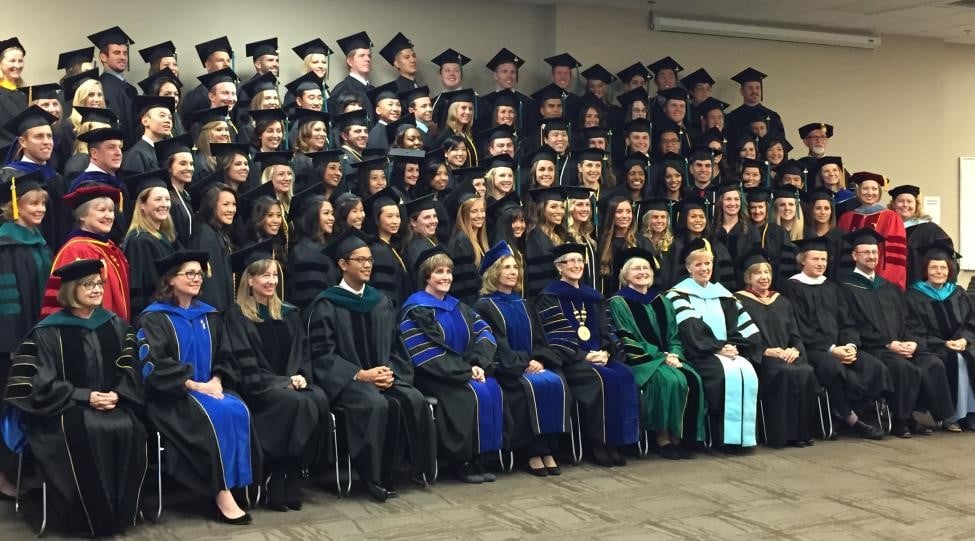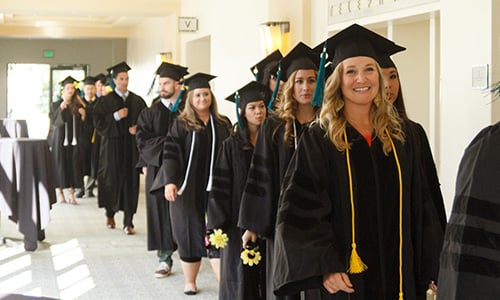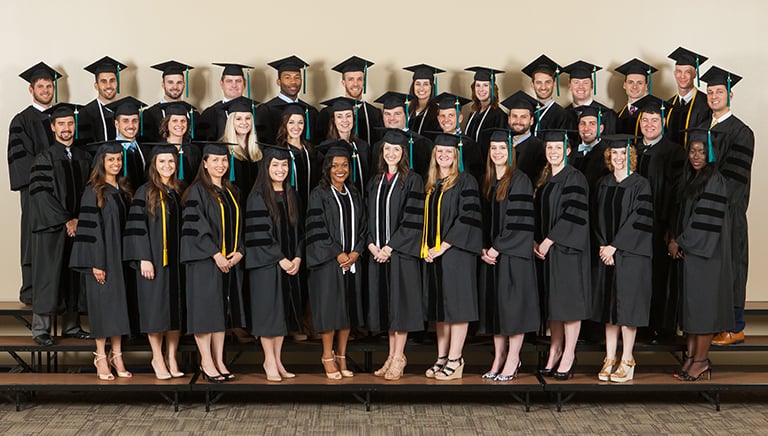
C2 vertebras
It started with a piece of equipment that was ignored for a while. It turned into a story of innovation in physical therapy education.
Gabriel Somarriba, PT, DPT, is an assistant professor and the assistant program director of the Doctor of Physical Therapy (DPT) program on the USAHS campus in Miami, Florida. “Our Center for Innovative Clinical Practice was equipped with a Fusion 3D printer that we hadn’t used yet,” he says. “I thought, we need to put this thing to work. How can we use it to our best advantage?”
The problem was, the printer required certain file types provided by a third party. “I wanted autonomy to create our own models tailored to the student experience,” Dr. Somarriba says. Although he hadn’t seen it done before, it occurred to him that the printer could be used to create custom bone models and orthoses for educational use. It could also replicate unusual anatomical structures seen in cadaver dissection in the wet lab. 3D-printed objects are quite inexpensive to produce, so this may be a cost-effective approach for making models, he surmised.
“I searched for industrial scanning options,” Dr. Somarriba says. “Scanners that would produce a high-quality model with intricate detail.” 3D scanners analyze an object to collect data about its shape in three dimensions. The data is typically used to construct digital 3D models for movies, video games, virtual reality, and product design applications. These scanners also improve the fidelity and quality of 3D-printed objects.
After some research, Dr. Somarriba landed on the EinScan Pro 2X Plus, a high-precision handheld 3D scanner. The University’s Innovation Steering Committee awarded his grant proposal, which included the purchase of the scanner. “This brings in a new modality that puts our students at the forefront of technology,” Dr. Somarriba says. “It aligns with the future of our profession.”


Piloting the Technology in Miami
The project became a pilot initiative that was launched during the Summer 2020 trimester on the Miami campus within the DPT program. Alongside Dr. Somarriba, faculty members Loren Szmiga, PT, DPT, and Arvie Vitente, PT, DPT, were faculty sponsors of the project.
The use of this technology was initially piloted to impact courses in the physical therapy curriculum. Mauricio Viana, a clinical simulations specialist and biomedical engineer, guided faculty members on the versatility and uses of the scanner.
In the Prosthetics, Orthotics and Assistive Technology course, taught by Dr. Szmiga, students complete a project on the potential uses of the 3D printing technology to scan and build custom orthotics for the upper extremities. The project focuses on finger gutters and oval 8s, tools used to immobilize fingers in physical therapy.
In the orthopedic courses, the 3D printing and scanning technology is used to create and print Kaltenborn wedges that are designed to be lighter and less expensive than versions currently available on the market. These are supplemented by the development of handles to use with a TheraBand during rehabilitation exercises.
Dr. Somarriba and clinical simulations specialist Mechelle Roy also used the scanner and printer to create over 1500 vertebrae models that were sent to students across campuses who were learning from home due to the pandemic. “There are so many uses for this technology,” Roy says. “Anatomical structures, adaptive equipment, low-cost task trainers. Tabletop ventilators—you print them off for pennies.” (3D-printed ventilators don’t actually function, but they are good for use in educational simulations.) Roy plans to create additional models used to identify key structures in the anatomy curricula.


More Uses for Faculty, Students, and Patients
Alongside the classroom applications, Dr. Somarriba began building customized equipment to assist patients in the community. One such patient, who has overactivity of the bicep, couldn’t keep his hand on the joystick of his electronic chair. Beginning with prototypes made from tongue depressors, Dr. Somarriba, along with assistant professor and neurology specialist Miguel Garcia, PT, DPT, created a model of a supinator block that would help the patient use the joystick; the professors then scanned and printed it. Dr. Somarriba intends to create more equipment for the Miami pro bono clinic.
In another experiment, Dr. Somarriba scanned a human hand and worked with the software to build a splint on top of the hand to create a perfect fit. He is involved in a research study comparing this splint to one molded by hand with thermoplastics to see which type works better for patients.
And the uses aren’t just for PT: Lydia Kite, OTD, an occupational therapy lecturer on the St. Augustine campus, created a burn simulation for use in her courses. Faculty in the Master of Science in Speech-Language Pathology program could print portions of the inner ear or esophagus.
The University currently has just one 3D scanner, but it aims to expand this technology to all five campuses. Faculty hope to scan cuts of brains, spines, and muscle and nerve anomalies in the future, and to make prints from CT scans. For example, they could scan residual limbs to print prosthetics for amputees. Faculty members Scott Love, PT, DPT, DHS, and Todd Bourgeois, PT, DPT, have expressed interest in using it for patients they see in their physical therapy service missions to El Salvador, which they hope to continue once it’s safe to travel.


“A Huge Story for Students”
Almost accidentally, Dr. Somarriba ended up innovating a range of new applications for simulation study and for patients. “This is an innovative and unique experience for students—one that’s at the forefront of technology in the field,” he says. “Students didn’t know this existed, and they’re really excited about this application.
“This is why I love the University and all its focus on innovation,” he continues. “PT and OT are thought of as primarily hands-on therapy. But this technology enables our students to get outside that box of traditional thinking—and it makes them innovative practitioners.”
The largest PT school in the United States,* the University of St. Augustine for Health Sciences (USAHS) offers a hands-on Doctor of Physical Therapy (DPT) degree. Join a collaborative cohort of peers who learn under the mentorship of expert faculty-practitioners. Practice with mock and real patients in our state-of-the-art simulation centers and learn anatomy with our high-tech tools. Prepare for clinical practice with a wide range of patients, as well as for advanced roles in research, practice leadership, and policymaking. Residential (blended didactic coursework + in-person labs on weekdays) and Flex (blended didactic coursework + in-person labs on weekends) formats are available.
*Based on total DPT degrees conferred, as reported by the Integrated Postsecondary Education Data System (IPEDS). Data is captured by IPEDS through interrelated surveys conducted annually by the U.S. Department of Education’s National Center for Education Statistics (NCES). https://nces.ed.gov/ipeds/








